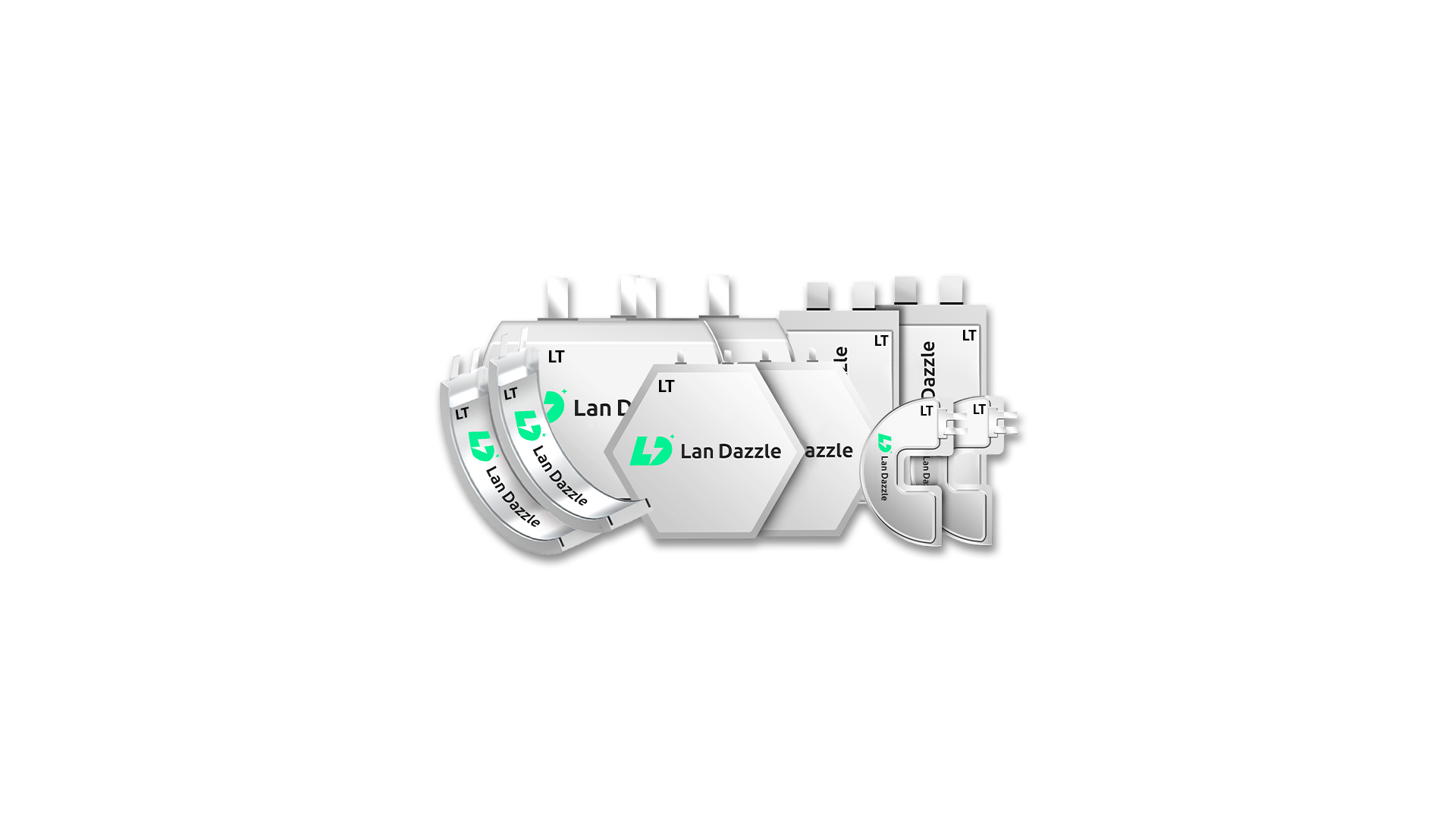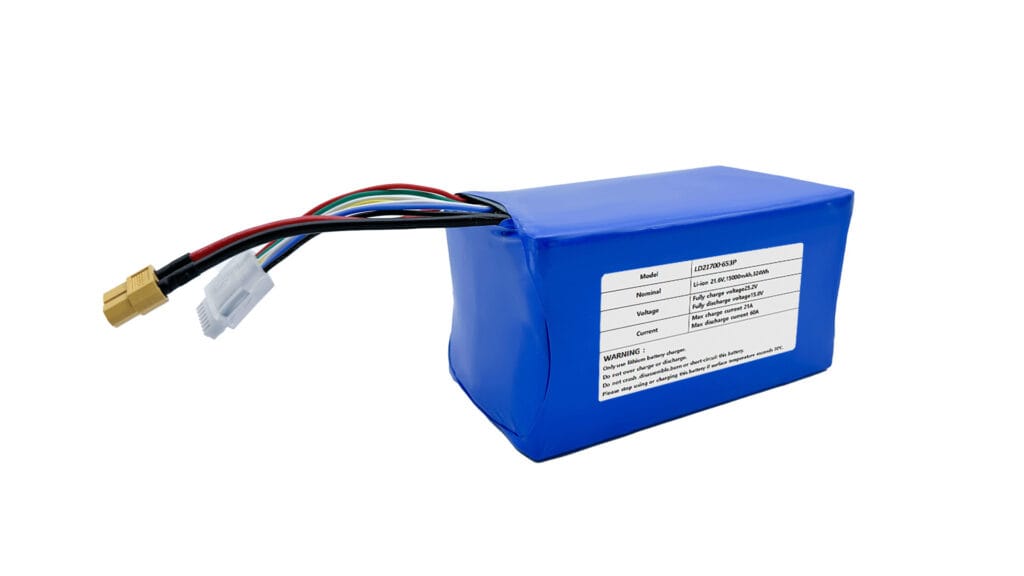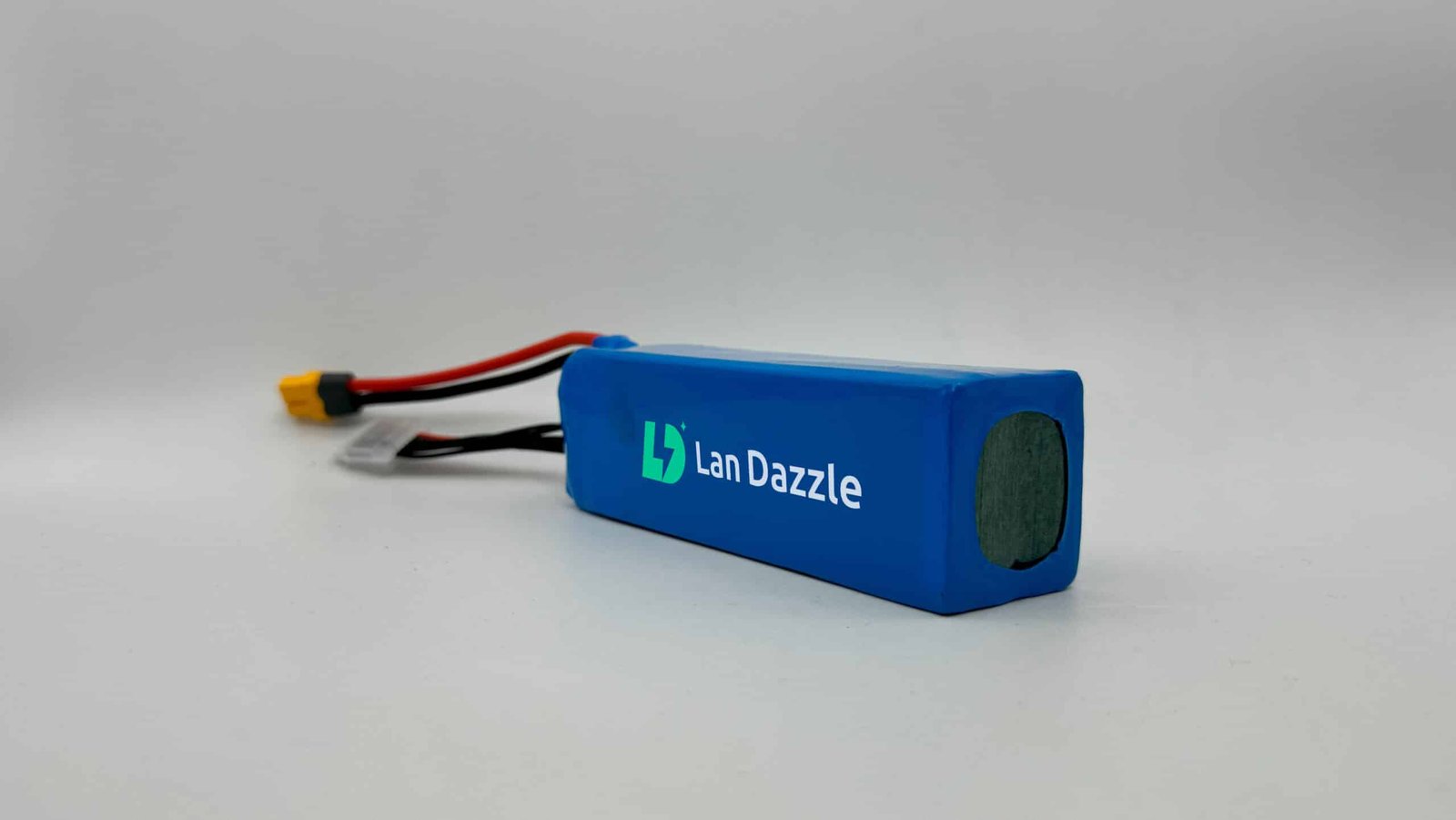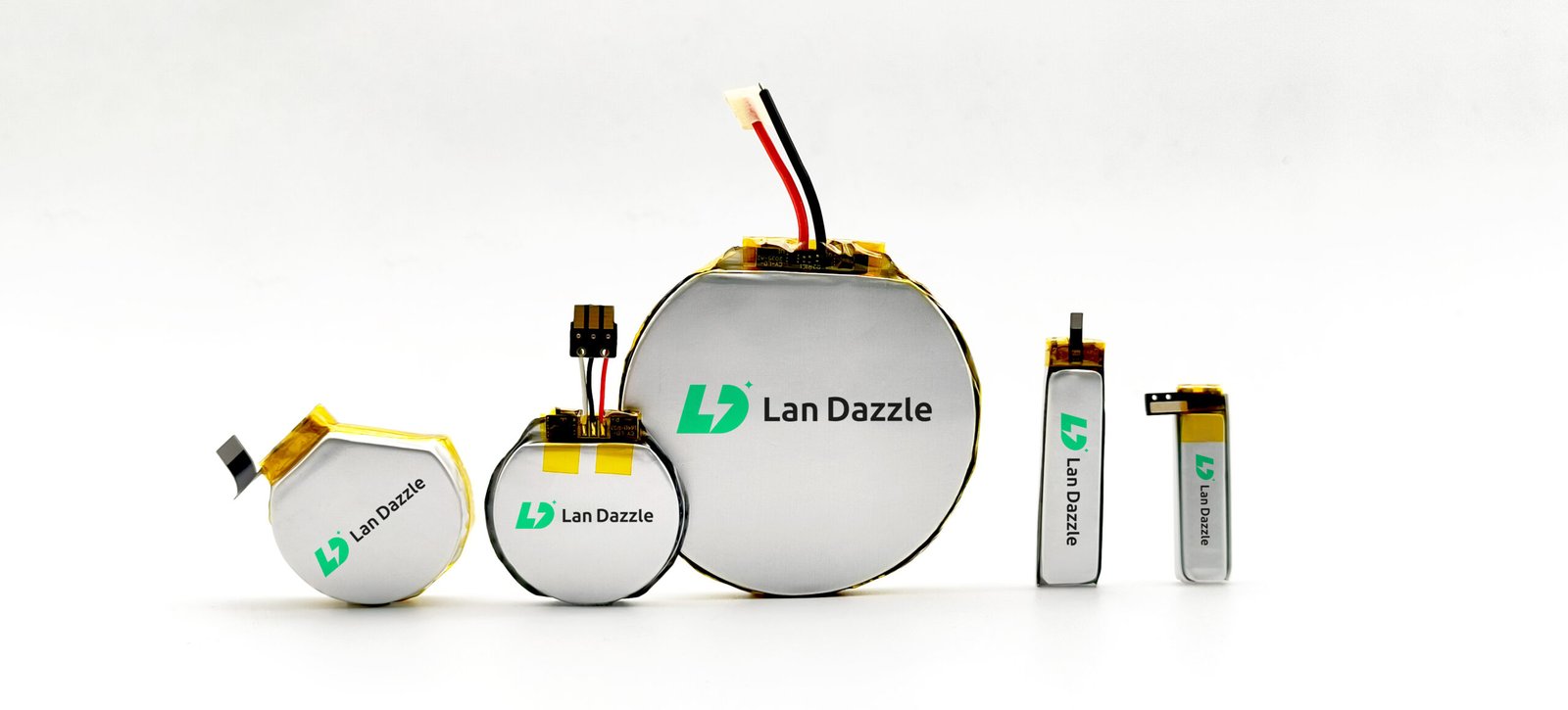Introduction
Smart glasses are poised to redefine wearable computing—but only if they can balance sleek form factors with meaningful battery life. Enter the L shaped battery: a right‑angle pouch cell engineered to squeeze into eyewear frames, delivering up to 25% more capacity in the same volume as traditional rectangular cells. With typical smart‑glasses runtimes lingering around four hours of moderate use, designers need every millimeter and milliamp-hour they can get. In this guide, we’ll explore why L shaped battery matter for smart glasses designers and how LanDazzle powers the next generation of smart eyewear.
Why L‑Shaped Batteries Matter in Smart Glasses
Space & Aesthetics
Smart glasses demand unobtrusive form factors. Unlike bulky VR headsets, modern AR eyewear must resemble regular glasses: thin, lightweight, and stylish. L‑shaped batteries conform to the temple arms and bridge sections, unlocking hidden cubic millimeters for energy storage without altering the outer silhouette.
Capacity Boost
Thanks to their right‑angle fold design, L‑shaped cells deliver up to 25% more capacity per frame volume, translating to longer usage between charges. For consumer‑friendly wearables, that difference can mean the gap between an all‑day device and one tethered to a charger.
Weight Distribution & Comfort
Weight near the hinge area reduces feeling of front‑heavy frames, improving comfort during prolonged wear. By redistributing mass closer to the ear, L‑shaped packs help glasses sit naturally on the face.
Design Flexibility
Angular cells allow battery placement adjacent to speaker modules, cameras, or sensors—keeping critical electronics compact and balanced. This flexibility empowers creative frame geometries, from sporty wrap‑arounds to minimalist fashion-forward designs.
What is an L‑Shaped LiPo Battery
-
Pouch Enclosure: Thin, welded aluminum laminate housing electrolyte and electrodes.
-
Folded Electrode Stack: Cathode and anode layers folded at a 90° angle(or customized angle) to create the “L” shape.
-
Separator: Microporous membrane ensuring ionic transport while preventing short circuits.
-
Tabs & Flex PCB: Soldered to the pouch ends, routed around frame edges for minimal bending stress.
-
Protective Overwrap: Insulating layer to guard against abrasion and moisture ingress.
Energy Density: Modern LiPo chemistries achieve 200–250 Wh/kg. L‑shaped designs preserve this density by avoiding wasted corner space.
Key Performance Metrics
-
Capacity (mAh): Typical ranges for smart glasses: 100–200 mAh, offering 3–6 hours of mixed use.
-
C‑Rate: Determines how quickly current can be drawn. AR features like live translation demand sustained discharge rates of 0.5–1 C.
-
Cycle Life: Quality cells retain ≥80% capacity after 500+ cycles under moderate depth of discharge.
-
Internal Resistance: L‑shaped layout balances internal resistance, reducing heat build‑up during peak discharge.
-
Operating Temperature: Rated −20 °C to +60 °C; cold‐weather performance requires special electrolytes and casing.
A comparison table of key specs highlights the superiority of L‑shaped cells versus rectangular pouches in tight-fit applications.
Designing for Fit: Mechanical Integration
Frame Geometry: Begin with 3D scans of frame temples. Reserve a cavity with at least 0.5 mm clearance.
Mounting & Shock Absorption: Use silicone gaskets or custom-molded TPU inserts to cushion cells from vibration.
EMC/EMI Shielding: Thin copper or aluminum foils integrated into temples protect against wireless‑module interference.
Connector Routing: Flex PCBs should follow the frame curvature, minimizing stress at fold points.
Thermal Management & Safety
Heat Sources: Rapid discharge during AI‑mode features can spike cell temperature. Ray‑Ban AI glasses drop to 30 min runtime under intense use, pointing to thermal limits.
Solutions:
-
Micro Thermal Pads: Conduct heat from pouch surface to metal sub‑frames.
-
Phase‑Change Materials: Absorb transient thermal spikes during heavy loads.
-
Embedded Thermistors: Real‑time monitoring triggers power throttling or user alerts.
Safety Circuits:
-
PTC/NTC Fuses: Cut off under overcurrent.
-
Battery Management IC: Balances cell voltage, prevents overcharge and deep discharge.
Conclusion
L‑shaped LiPo batteries unlock the next frontier in smart‑glasses design—merging compact form with extended runtime, reliable safety, and seamless integration. For product designers and OEMs, adopting this right‑angle pouch technology can be the difference between a prototype and a market‑ready wearable.
LanDazzle: Smart Glasses Battery Manufacturer
At Lan Dazzle, we specialize in designing and manufacturing high-quality smart glasses battery. Our trapezoid battery batteries are engineered to meet the specific needs of compact devices like smart glasses and other portable electronics. We ensure that our batteries deliver reliable power, long-lasting performance, and safety in the smallest form factors.
With years of experience in battery manufacturing, Lan Dazzle offers customized battery solutions for a wide range of applications. Whether you’re developing a new smart card or upgrading existing technology, we provide the perfect battery solutions for your products.
You can get the following services from Lan Dazzle:
●Flexible support for customized solutions
●Reliable and stable performance
●Samples and mass production available
●OEM, ODM services available
Interested in custom L‑shaped solutions? Contact us at info@landazzle.com to engineer the perfect power pack for your eyewear innovation.





